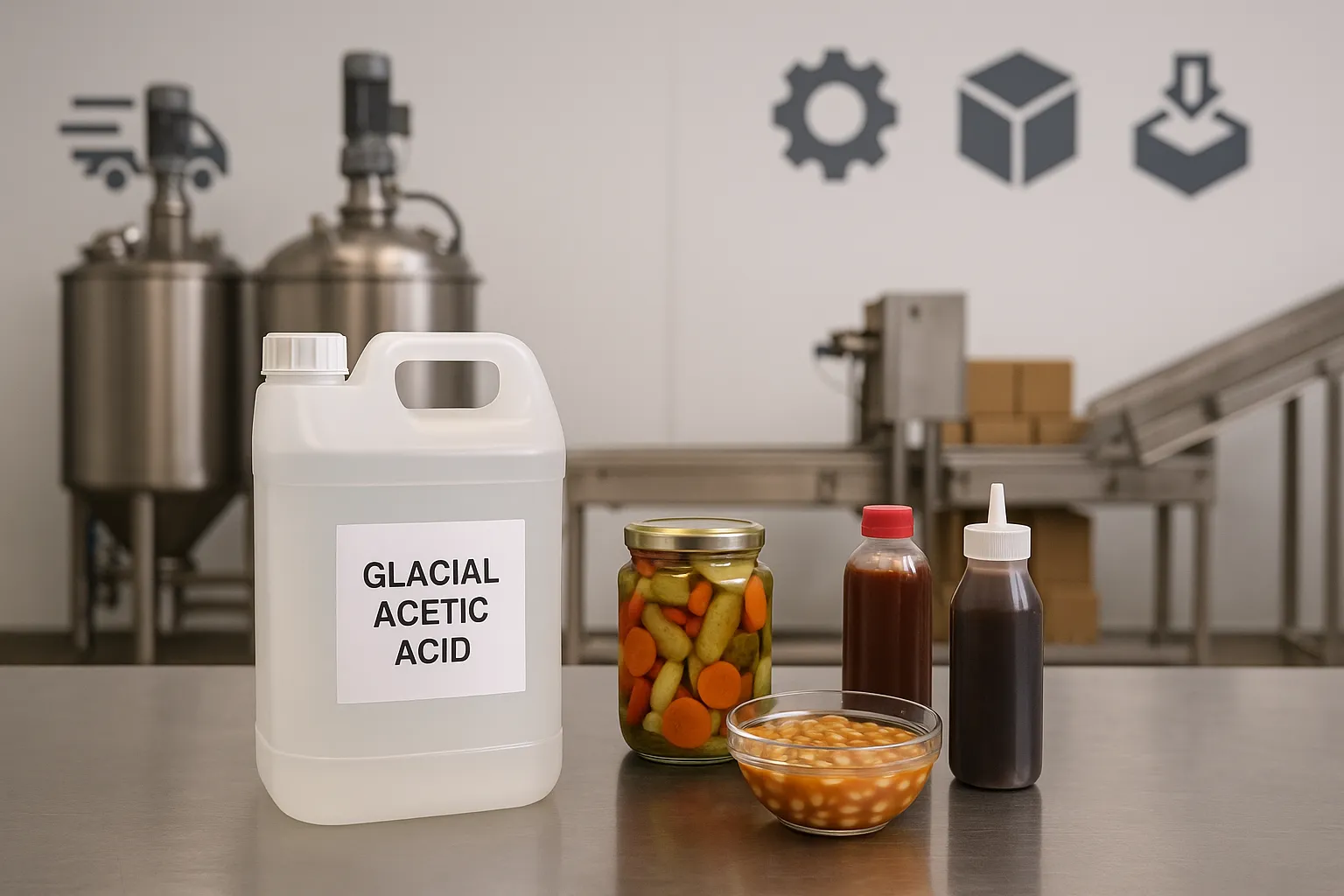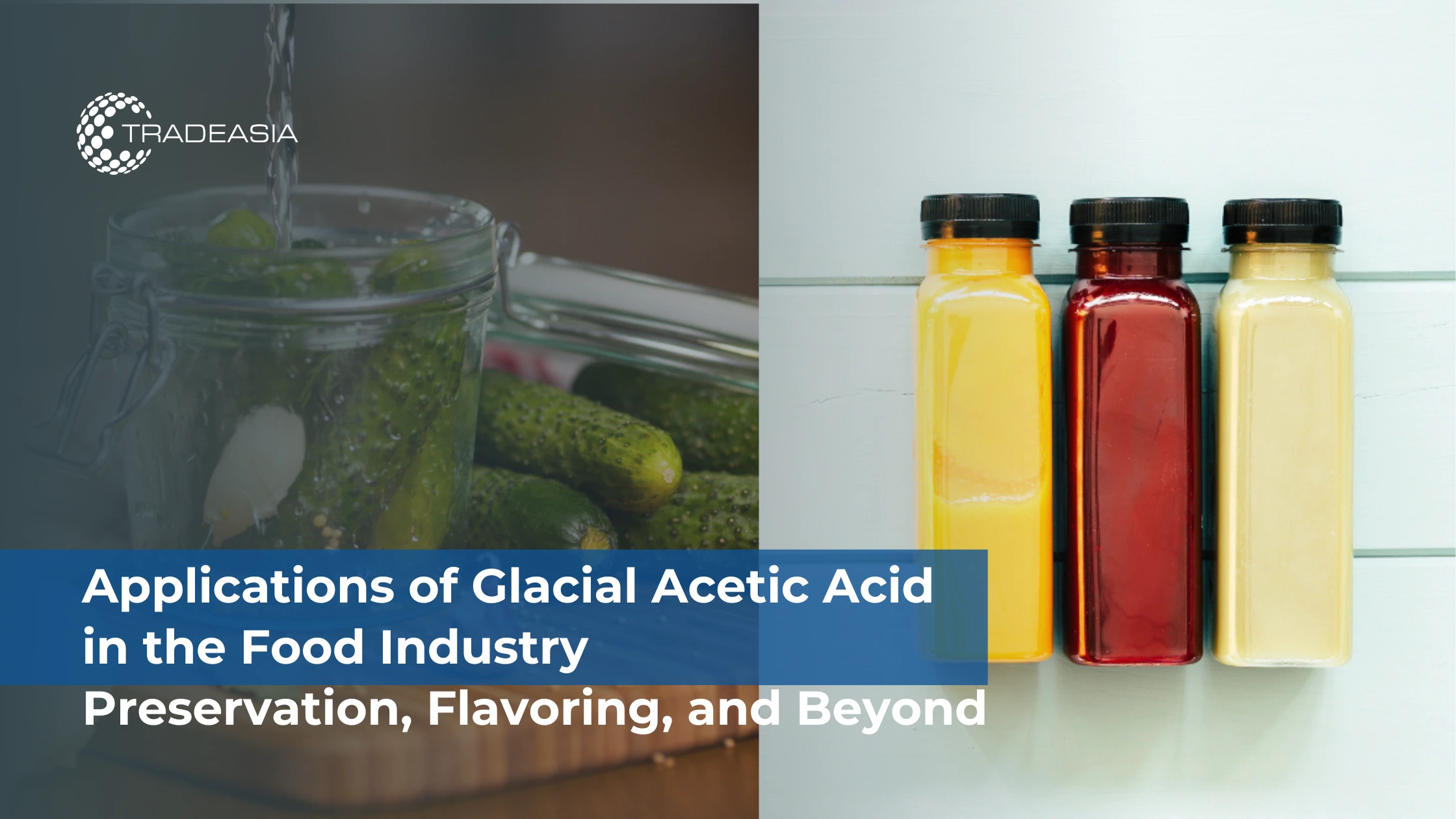Introduction: What’s Changing in Q3 2025?
As we step into Q3 2025, the global market for glacial acetic acid is undergoing a significant transformation driven by supply bottlenecks, strong food sector demand, and dynamic pricing shifts. This clear, pungent liquid chemical—widely used as a food acidulant and preservative—remains a cornerstone in vinegar production, sauces, beverages, and pickled products.
The demand surge from food manufacturing in Asia and new industrial applications in packaging and adhesives is reshaping global trade routes. Meanwhile, producers are navigating stricter regulations, raw material volatility, and increased freight costs. This article explores the current demand and supply outlook for glacial acetic acid in Q3 2025, offering strategic insights for procurement professionals.
If you're involved in purchasing or sourcing acetic acid, understanding the market direction is essential. Read on to gain actionable insights, and for product specs and sourcing options, visit our detailed glacial acetic acid food-grade page.
Global Demand Dynamics: Food, Pharma, and Industrial Use
Glacial acetic acid's largest consumer segment remains the food processing industry, accounting for nearly 30% of global demand in 2024, with that number set to increase in Q3 2025. Food manufacturers use it as an acidulant, pH regulator, and antimicrobial agent in vinegar, canned foods, sauces, and beverages.
Pharmaceuticals are also driving up demand. Acetic acid is a core raw material in aspirin and other medical intermediates. As global health systems continue post-pandemic restocking and new drug approvals increase, demand from pharma manufacturers is tightening supply in certain regions.
Industrially, glacial acetic acid is heavily used in the production of vinyl acetate monomer (VAM), an essential building block for adhesives, paints, and packaging films. According to a recent IHS Markit report, global VAM demand is expected to rise 5% in Q3, putting further pressure on feedstock availability.
Supply Chain Status: Key Producers and Regional Challenges
The bulk of the world’s glacial acetic acid comes from producers in China, the U.S., and Europe. Chinese suppliers account for nearly 50% of exports, particularly food-grade grades compliant with FCC and GB standards. However, several Chinese plants are scheduled for maintenance shutdowns in July–August 2025, temporarily reducing capacity.
In the U.S., steady output is expected, but domestic consumption has tightened export availability. European suppliers are also facing challenges due to elevated energy costs and raw material constraints affecting methanol feedstock. These issues create sporadic supply availability across the EU region, particularly for food processors.
Disruptions in Red Sea shipping routes and rising insurance costs for sea freight are compounding delays, especially for Southeast Asian importers. Buyers in Indonesia, Vietnam, and India report shipment lead times stretching to 30–45 days. Sourcing from regional distributors with inventory buffers can help mitigate this risk.
Price Trends and Forecasts: What Buyers Should Expect
Prices for glacial acetic acid rose approximately 6–8% globally in Q2, and early indicators suggest continued upward momentum in Q3. The average FOB China price stood at $610/MT at the end of June 2025, with spot offers in the range of $630–650/MT for food-grade material.
The combination of higher demand, production turnarounds, and logistical pressure is keeping market sentiment bullish. Buyers with fixed contracts are in better positions, while spot market purchasers are experiencing price volatility and payment term tightening.
Experts from ICIS predict acetic acid prices will remain elevated until early Q4 when plant restarts and seasonal cooling in demand might ease the pressure. For current offers and direct sourcing help, contact our team via Food Additives Asia contact page.
Implications for Food-Grade Buyers
For buyers in the food industry, securing high-purity glacial acetic acid remains a top priority, especially for compliance with food safety standards like HACCP, FSSC 22000, and regional import approvals. Sourcing from certified suppliers is more important than ever amid rising instances of sub-grade material entering the market.
Beverage brands and condiment manufacturers should monitor acetic acid levels in storage due to its sensitivity to heat and packaging material. Q3’s hot climate in Asia and Middle East regions could affect stability if logistics are poorly managed. Cold-chain transportation or temperature-controlled warehousing is strongly advised.
Given longer delivery lead times, food processors are shifting to forward booking and diversifying sourcing channels. Our platform at Food Additives Asia helps connect buyers with global producers offering food-grade material with consistent lead times and batch documentation.
Strategic Sourcing Recommendations
To navigate Q3’s tight market, companies should adopt strategic sourcing practices, including dual-sourcing from both domestic and international suppliers. Engage with partners who can offer flexible batch sizes, quick customs clearance, and traceable COAs.
It's also essential to build buffer stock for high-turnover SKUs, especially if you're manufacturing vinegar, sauces, or fermented products. Delays from China or Europe could otherwise halt production. If working with contract manufacturers (CMOs), align sourcing timelines with their batch schedules.
Use tools like demand forecasting models and bulk shipping consolidation strategies to optimize landed costs. For tailored procurement consultation or direct B2B quote requests, reach out through our contact page.
Conclusion: Market Watch and Long-Term Planning
In Q3 2025, glacial acetic acid presents both challenges and opportunities. High demand from food, pharma, and industrial segments is driving prices, while regional production and logistics hurdles strain supply lines.
However, companies that plan strategically—by diversifying suppliers, forecasting demand early, and prioritizing food-grade compliance—can navigate these waters smoothly. With the right approach, glacial acetic acid procurement can remain reliable and cost-effective despite volatility.
Stay updated on acetic acid developments and connect with certified suppliers at Food Additives Asia, your gateway to quality ingredients and global B2B sourcing.


Leave a Comment